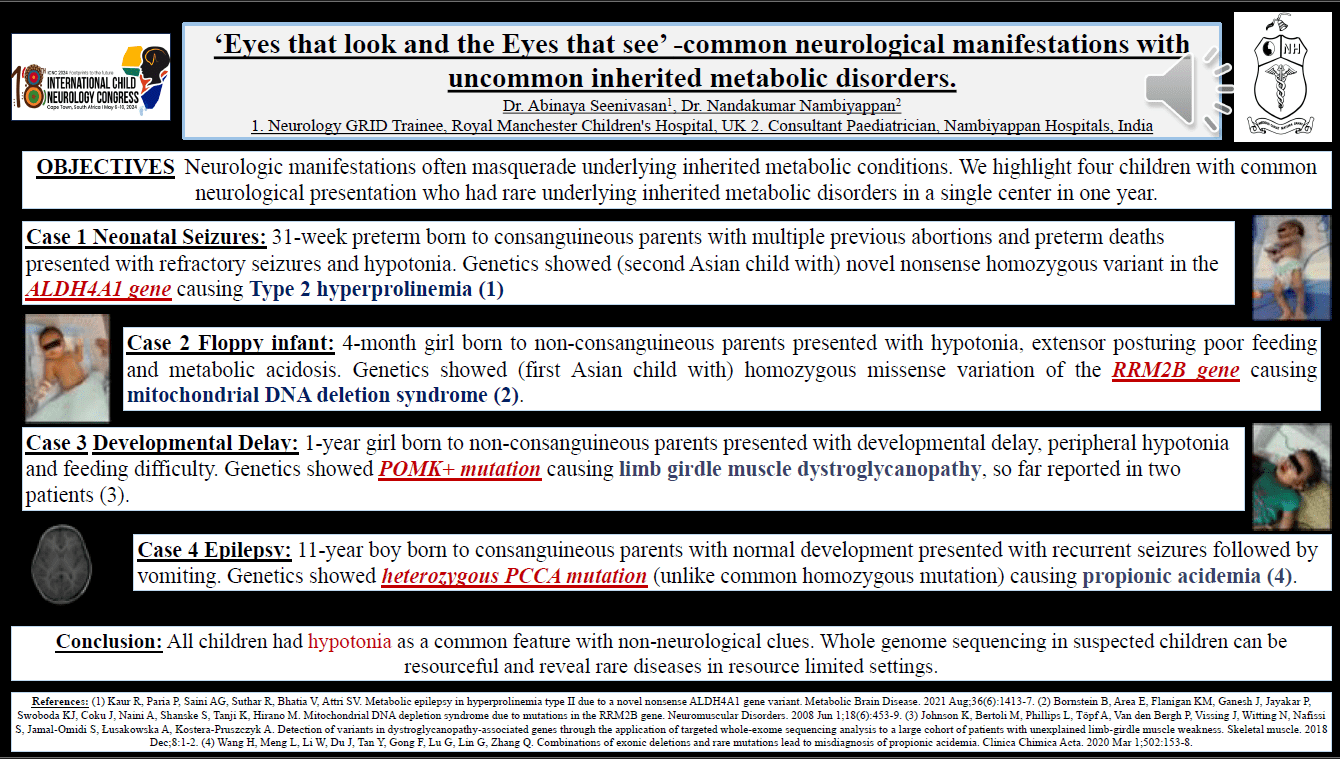‘Eyes That Look And The Eyes That See’- Common Neurological Manifestations With Uncommon Inherited Metabolic Disorders.
Objective: Neurologic manifestations often masquerade underlying inherited metabolic conditions. We highlight four children with common neurological presentation who had rare underlying inherited metabolic disorders in a single center in one year. Neonatal seizures: 31-week preterm born to consanguineous parents with multiple previous abortions and preterm deaths presented with refractory seizures and hypotonia. Genetics showed (second Asian child with) novel nonsense homozygous variant in the ALDH4A1 gene causing type 2 hyperprolinemia. Floppy infant: 4-month girl born to non-consanguineous parents presented with hypotonia, extensor posturing poor feeding and metabolic acidosis. Genetics showed (first Asian child with) homozygous missense variation of the RRM2B gene causing mitochondrial DNA deletion syndrome. Developmental Delay: 1-year girl born to non-consanguineous parents presented with developmental delay, peripheral hypotonia and feeding difficulty. Genetics showed POMK+ mutation causing limb girdle muscle dystroglycanopathy, so far reported in two patients. Epilepsy: 11-year boy born to consanguineous parents with normal development presented with recurrent seizures followed by vomiting. Genetics showed heterozygous PCCA mutation (unlike common homozygous mutation) causing propionic acidemia. Conclusion: All children had hypotonia as a common feature with non-neurological clues. A good knowledge of metabolic condition with clinical neurological clues will help in narrowing the diagnosis. Whole genome sequencing in suspected children can be resourceful and reveal rare diseases promptly.
Abinaya Seenivasan
Royal Manchester Children's Hospital
United Kingdom
Nandakumar Nambiyappan
Nambiyappan Hospitals
India
